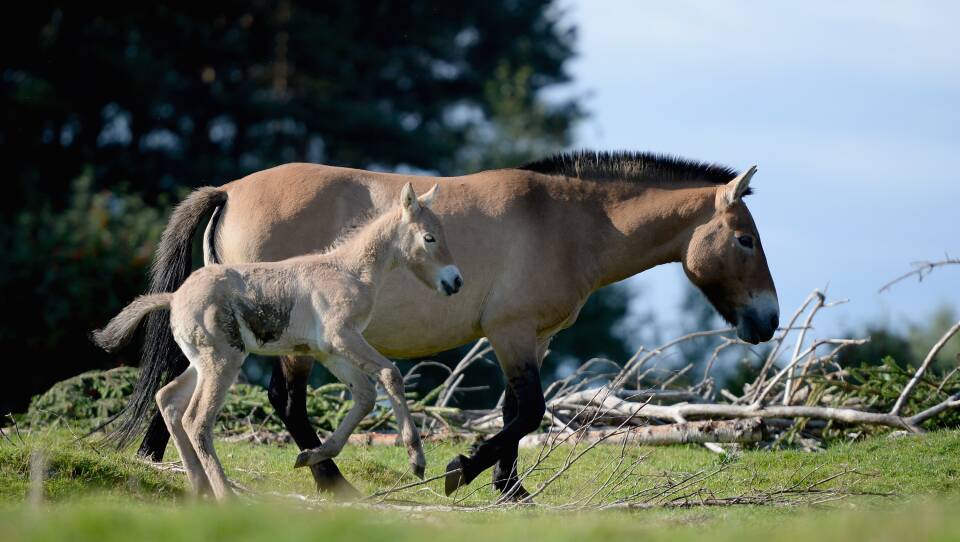A Mongolian horse that has long been hailed as the last truly wild horse species in existence isn't really all that wild.
It turns out that Przewalski's horses are actually feral descendants of the first horses that humans are known to have domesticated, around 5,500 years ago.
What's more, the modern horses that people ride today cannot be traced to those early steeds. That means humans must have tamed wild horses once again later on, somewhere else, but no one knows where or when.
These are the startling conclusions of a new genetic study, published in the journal Science, which challenges long-held assumptions about the entwined history of horses and humanity.
"It's huge. It changes fundamentally how we think about this. This kind of game-changing research is very rare," says Robin Bendrey, an archaeologist at the University of Edinburgh who has studied the domestication of horses but was not part of the research team. "It's incredibly exciting."
After all, Bendrey notes, "the domestication of the horse is very significant for the human past, for our ability to travel, communicate, and fight each other."
Ludovic Orlando, a researcher at the University of Toulouse in France, says that he and his colleagues set out to trace how the horse evolved after it was first domesticated.
They analyzed 88 ancient and modern horse genomes that span the last five millennia, including 20 horses from the Botai settlements in northern Kazakhstan.
That's where archaeologists have uncovered the earliest evidence of humans living with tame horses, such as corrals, remnants of horse milk on pottery, and patterns of tooth wear that suggest the animals wore harnesses.
While the researchers had assumed that the Botai horses would be the ancestors of modern domesticated horses, that's not what they found.
"Instead, we found that they are the ancestors of what we call today the 'wild horses,' " says Orlando.
It looks like the Botai culture's use of horses petered out to a dead end, as the horses somehow became untethered from humans and produced the feral descendants known today as Przewalski's horses, which are commonly described as the only wild horses left in the world.
"The first time we saw this result, none of us could believe it. It was that surprising — this is like turning upside [down] all the theories," says Orlando. "We spent a full year trying to kill the evidence we see, and we are very confident that the evidence we see is extremely robust."
Although the Botai culture has the first known evidence of horse domestication, archaeologists have puzzled over a gap of about 1,000 years after that before domesticated horses began to suddenly show up more regularly in the archaeological record, when things like chariots and harness fittings appeared and spread rapidly across Eurasia.
"This research helps explain something that's troubled people for a while," says Bendrey, noting that this pattern would make a lot more sense if there were separate domestication events, first by the Botai and then later somewhere else.
Now scientists are on a quest to figure out where, and to learn which population of historic horses gave rise to the modern-day ones that we're all so familiar with, says Sandra Olsen, an archaeologist at the University of Kansas, who has done work in Botai villages.
Copyright 2018 NPR. To see more, visit http://www.npr.org/.




